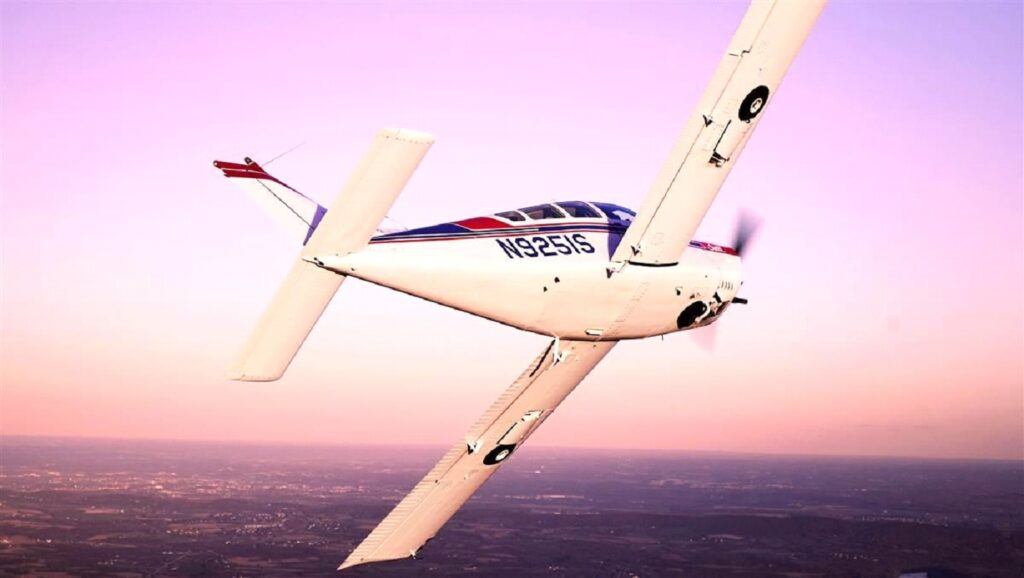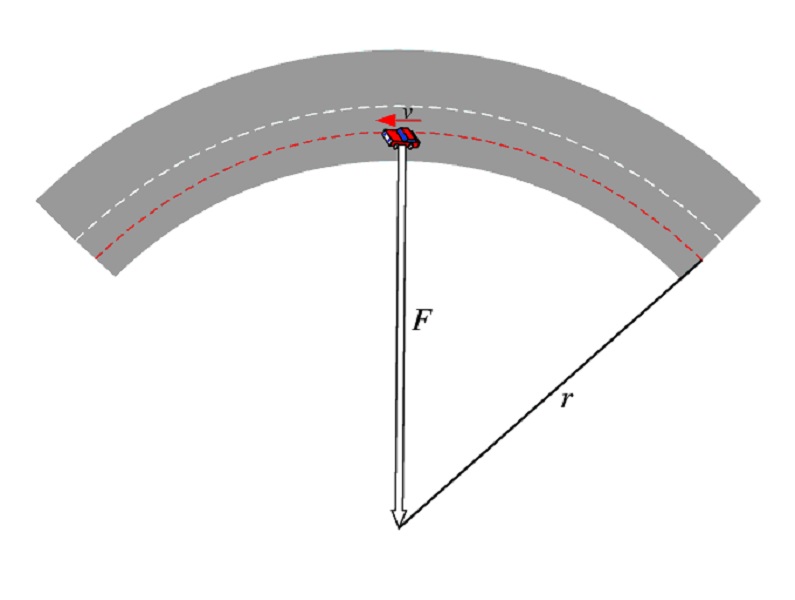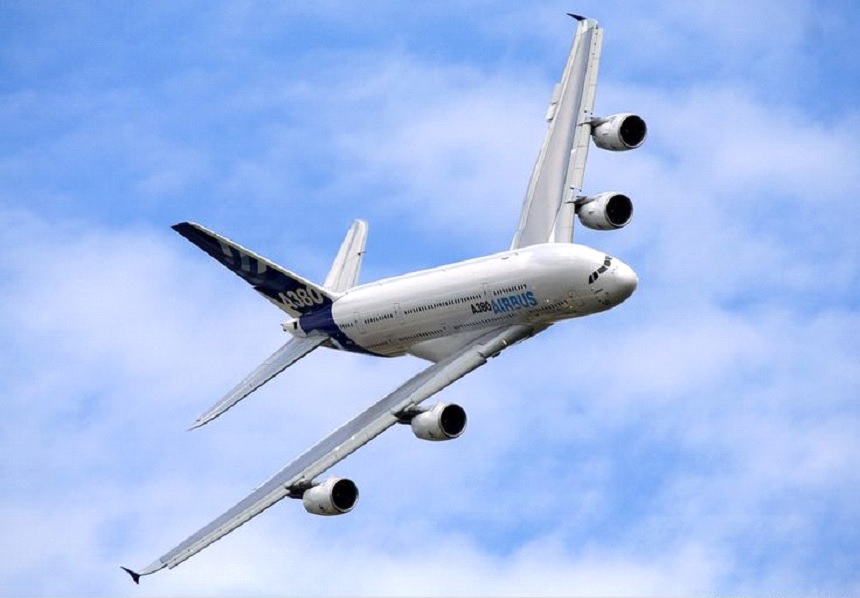How do Planes turn in the Air? – Exploring the Physics Behind Planes’ Turning Radius:

Have you ever wondered how airplanes turn in the air? Planes have a turning radius because they can’t move sideways to turn. In order to change direction, an aircraft must either dive or climb to create enough extra speed for it to fly in a new direction. Different types of airplanes will have different turning radiuses because of their design and the weight distribution on the plane.
In this article, we’ll explore how airplanes fly and why they can’t move sideways. We’ll also discuss some of the ways pilots use to make turns in the air.
Understanding How Airplanes Fly:
If you’ve ever wondered how airplanes turn in the air, you’ve come to the right place. It’s a question that many people have asked, and we’ll explore it in this article.
To change direction, an airplane must either dive or climb to create enough extra speed for it to fly in a new direction. This doesn’t work very well with airplanes because of the design and the weight distribution on the plane.
Different types of airplanes will have different turning radiuses because of their design and the weight distribution on the plane. A heavy aircraft with a lot of weight on the front will have a turning radius that is much smaller than a light airplane with a lot of weight on the back. This is one of the reasons why pilots use a technique called crabbing to turn an aircraft.
Crabbing is when a pilot rotates the airplane at high speed so that some of the air flow from the propeller goes towards the ground instead of into the sky. This creates what is called the ground effect, which can cause a plane to turn more quickly.
Turning Radius:

The turning radius of an airplane is the distance the plane must fly in order to turn. This distance is what keeps airplanes from turning sideways.
When an airplane turns, it must either dive or climb to create enough velocity to make the turn. Planes with a relatively high-wing loading (i.e. many pounds on the wings) will have a smaller turning radius than airplanes with a low-wing loading (i.e. less weight on the wings).
The easiest way to think about this is to imagine that airplanes can’t lean to turn as cars and trucks can. To turn, they must either dive or climb; this causes extra drag and lowers their turning radius.
A plane’s turning radius also depends on the design and the weight distribution on the plane. There are three basic designs: low-wing, high-wing, and tailless designs. Low-wing airplanes have a smaller turning radius than high-wing airplanes because they have more weight on the wings. Tailless designs have a much larger turning radius because they have no vertical surfaces to create drag and slow down the plane’s speed.
How an Airplane Turns in the Air?
Airplanes have a turning radius because they can’t move sideways to turn. To change direction, an aircraft must either climb or dive into creating enough extra speed for it to fly in a new direction. Different types of airplanes will have different turning radiuses because of their design and the weight distribution on the plane.
To change direction, an airplane must either climb or dive to create enough extra speed for it to fly in a new direction. Different types of airplanes will have different turning radiuses because of their design and the weight distribution on the plane.
Pilots use different techniques to make turns in the air, depending on what type of airplane they’re flying and the situation.
If an airplane is preparing for landing and wants to make a 180-degree turn, it must dive in order to create enough momentum to make the turn. This is called a circling approach and it is often used in small airports when there is not much room for the plane to manoeuvre.
An airplane may also use a shallow dive followed by a half roll when making longer turns or changing direction in the air. This is often used in air traffic control procedures when an airplane needs to take a tight turn.
Why doesn’t an airplane move sideways?
The reason airplanes can’t move sideways is because they generate lift by moving through the air. It is not by pushing against the air. When an aircraft moves through the air, it creates a “bubble” of low-pressure air that hangs above and below the wing. This bubble of low-pressure air is called a “wake”.
This wake distorts the airflow on the other side of the airplane. When the airplane turns, the wake on one side of the aircraft will start to move with it and eventually roll up and over to the other side of the plane. This causes a left turn to create a right turn in its wake.
Pilots use this phenomenon to turn airplanes by changing their flight path in a series of steps. Pilots will make a steep turn to change the direction of their aircraft, then gradually reduce their bank angle to “unwind” their turn and get back on a straight path.
Basic Turning Maneuvers:

Pilots use three basic types of turning manoeuvres to make turns in the air.
The first type is called a coordinated turn. This type of turn is the most commonly used manoeuvre because it allows the pilot to keep the wings level with the ground. These turns are also called level turns.
The second type of turn is called a climbing turn. Climbing turns allow airplanes to make larger turns at slower speeds.
The third type of turn is called a descending turn. These types of turns are used to make sharper turns at greater speeds. A pilot will use descending turns when they want to regain altitude after making a turn or meeting air traffic control instructions.
The Importance of Airplanes Turning in the Air:
Pilots use different techniques to turn an airplane. The most common beginner manoeuvre is called a “power turn.” This manoeuvre is performed by lowering the plane’s nose to gain speed, then pulling back on the yoke to change direction.
Pilots also use a “turning circle,” which is the amount of airspace an airplane needs to make a 180 degree turn. The turning radius of an aircraft varies by model and the weight distribution on the plane. A smaller, lighter plane will have a smaller turning radius, while a heavier plane will have a larger turning radius.
Types of turns:
To make a turn in the air, an airplane must either dive or climb to create enough extra speed for it to fly in a new direction. This is because planes can’t move sideways like cars can.
The amount of time it takes an airplane to make a turn is called its turning radius. They must either climb or dive into changing the air flow direction, which creates enough force for planes to fly in a new direction.
Different types of airplanes will have different turning radiuses. This is because of their design and the weight distribution on the plane. The heavier the weight, the more speed required to make a turn. Lighter weight planes will require less speed for making turns.
Conclusion:
So now you know! Planes turn by either diving or climbing to build up enough speed. Pilots will also use ailerons and flaps to change direction. Keep in mind that the amount of turning that an airplane can do will depend on the design of the plane and the weight distribution.
Thank you for reading this article, and feel free to share your thoughts in the comments below!

I have always wondered why cars in those races can take those curves without falling out the tracks. And that same principle explains how aircraft turn in the air. These forces that compensate each other are a wonderful example of the balance required to make the aircrafts work. And it’s commendable to be able to use their combined effect to our advantage.
Yes aircraft turning in the air can be tricky explanation.
Can I just say, I applaud your hard work and dedication. I literally come across your website everyday so that just shows how hard you are working. Keep it up. Thank you for this insightful information. I am learning more and more about planes just by reading your articles. I will be sure to share this article around
Thanks for the feedback.
It is amazing how complex it is to turn an airplane and all the science that’s behind it. After reading this…..my mind is still a little blown I have to say!
I always thought they just did a lean or sideways roll to turn, a bit like in your images above, but it seems that there is a hell of a lot more to it than that!
Thanks for the feedback.